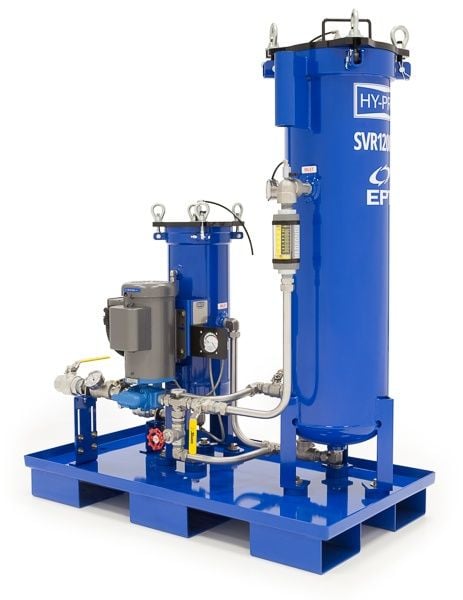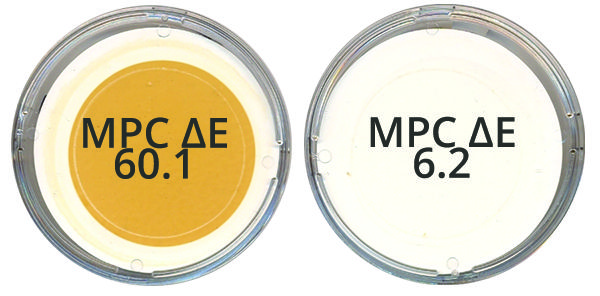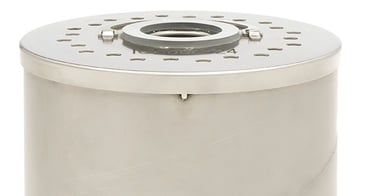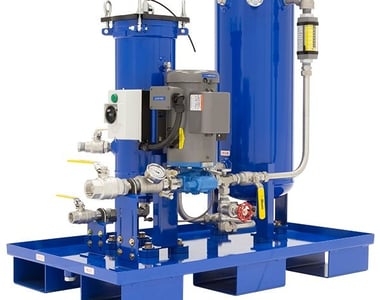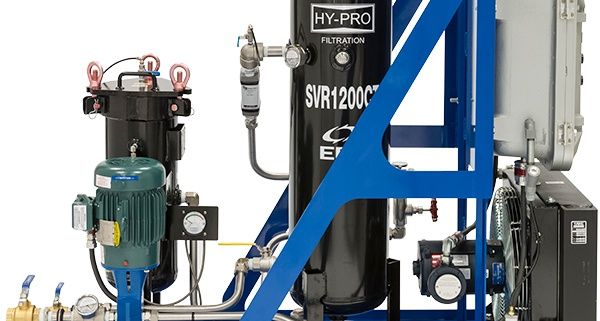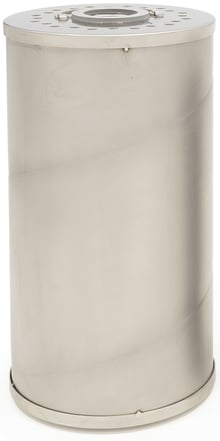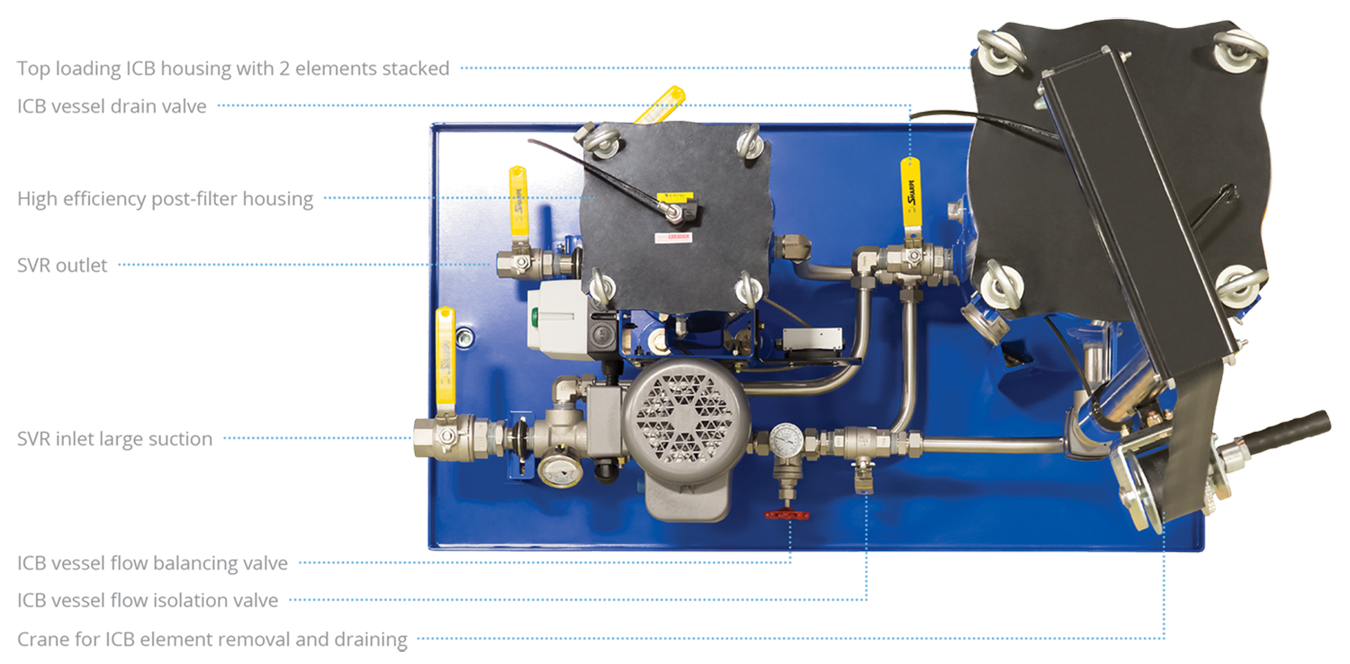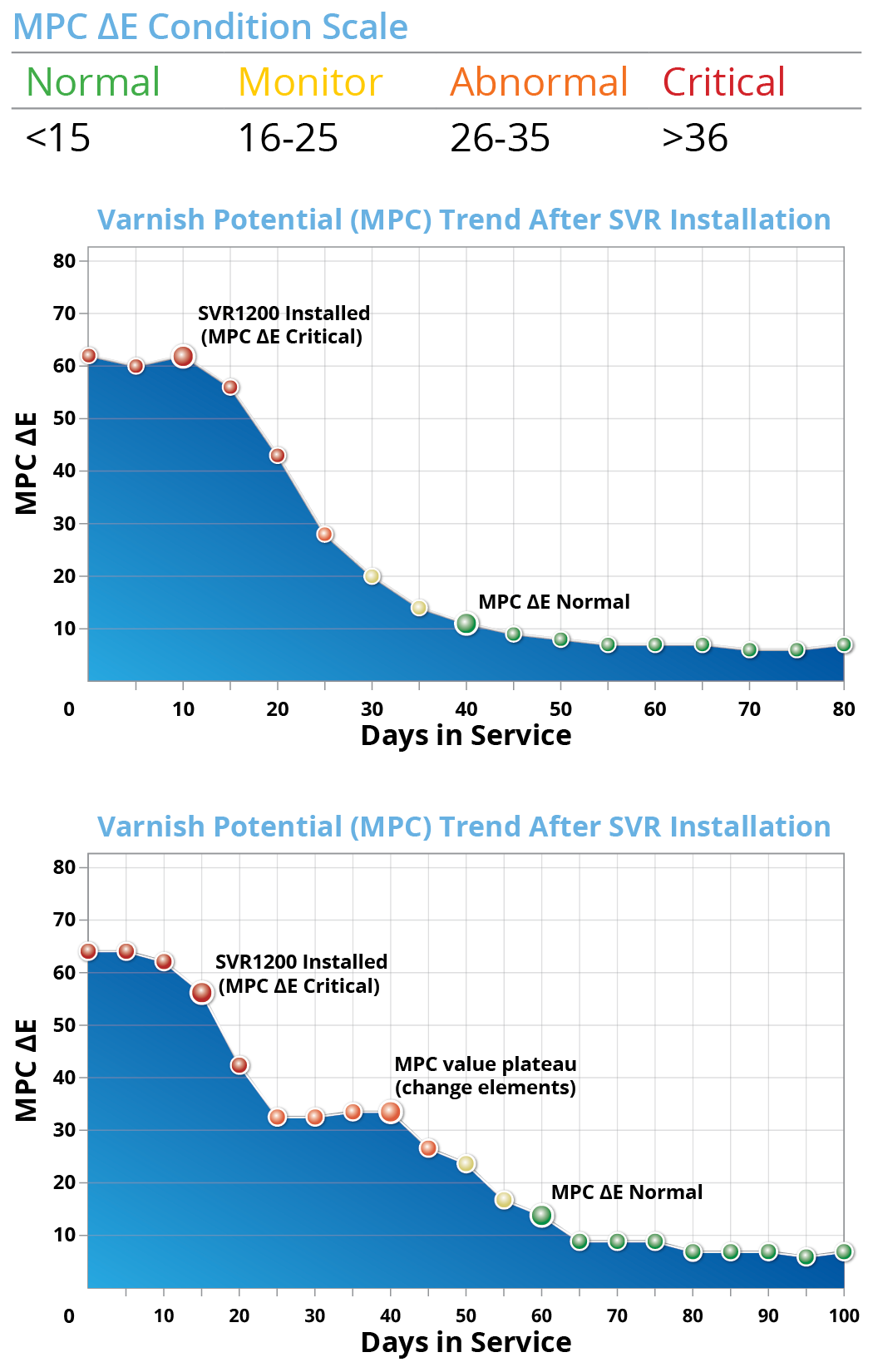Figure 1 depicts SVR1200 on a 7FA gas turbine with critically high varnish potential (MPC ∆E) experiencing slow servo valve response time and sticking. SVR had an immediate impact on the 6,200 gallon / 24,000 liter lube reservoir. Within 45 days MPC values were reduced to condition normal.
Starting RULER was 5 meaning only 5% AO remained in the oil, below condemning level. By installing SVR before a fluid change, all varnish deposits were removed before the oil change which allowed new oil to be added to a clean reservoir. If not for the deposit removal, AO in the new oil could have immediately depleted to as low as 65%.
Figure 2 is the restoration of a combustion turbine with heavy varnish deposits where MPC varnish potential dropped to 35 after SVR installation. 40 days into service, the ICB elements were changed as they were fully loaded with oxidation by-product. Once changed, MPC dropped to single digits. In the case of a heavily varnished turbine, 2 to 3 sets of ICB elements might be required to achieve condition normal. Once MPC drops to single digits, the ICB elements would normally be replaced annually to maintain the lubricant in optimal condition.
Note: Graph lines have been smoothed to demonstrate long term performance and MPC values will fluctuate as varnish is drawn from the system back into solution and subsequently removed from the system by the SVR.




